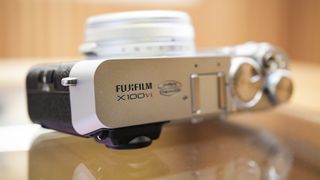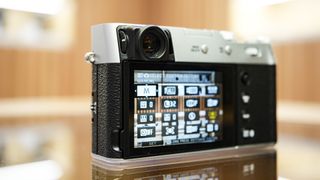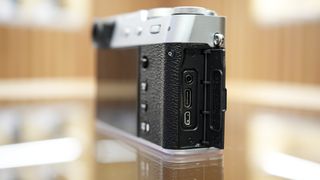The Fujifilm X100VI is one of the best compact cameras ever – but is it time for a shake-up in the X100 series?
The Fujifilm X100VI, one of the most anticipated cameras of 2024, is here – and it hasn’t disappointed. It’s one of the best compact cameras ever and it makes us dream of what else Fujifilm could do with the X100 series.
Destined to become the street photographer’s new favorite camera, the X100VI is a well-known variant of the Fujifilm
The retro appeal remains, as does the 23mm f/2 lens, which has the 35mm full-frame equivalent focal length popular in reportage photography. Under the hood, however, it’s a different story. This sixth-generation model – launching four years after its predecessor – is more powerful and capable in almost every way, giving photographers plenty of reasons to upgrade or purchase a Fujifilm for the first time.
You’re paying for the pleasure of using this camera – at $1,599 / £1,599 (Australia price not yet known) the X100VI is around 20% more than the more has been sold. four years after its release, thanks to a combination of its unprecedented popularity and opportunistic sellers.
If you were on the waiting list for the X100V, there’s good news and bad news. The bad news is that the X100V is no longer for sale; the good news is that you’ll get early word on the X100VI when sales start on February 28. The rest of us will have to wait and see how long it takes before we know what the new best premium compact camera is for most. people.
X-T5 powerful compact body with fixed lens
In many ways the Fujifilm X100VI is a major upgrade over the X100V, but in other ways it’s also nothing we haven’t seen before. The X100VI essentially brings Fujifilm X-T5 technology to the X100 series of compact cameras, and that’s a Awesome thing.
We have the same 40MP APS-C sensor and recognize. In short, the X100VI uses a lot of Fujifilm’s latest and greatest technology.
There’s also built-in image stabilization (IBIS) rated at up to 6 EV to keep your handheld shots sharp in a wider range of scenarios, which is a big deal for a camera designed to be used primarily handheld. Combine this with the built-in 4-stop ND filter and you can capture beautiful, creative handheld shots with a slow shutter speed, or simply slow down the shutter speed to improve image quality in low light.
All these improvements are packed into Fujifilm’s beloved retro design with that fantastic hybrid optical/electronic viewfinder – just two of the reasons why Ny Breaking ranks the X100 series as the best premium compact cameras around.
We dream of what’s next for the X100 series
Fujifilm X100VI price and availability
The Fujifilm To celebrate 90 years of Fujifilm, there is a special edition of the This special edition comes with a strap and various etchings, but is functionally identical to the standard X100VI and costs $1,934 / £1,934. Sales of this camera begin on March 28, while sales in the UK will take place in-person only from April 6 at the London House of Photography.
When I think of the higher resolution 40MP sensor (the to simulate different focal lengths: 35 mm, 50 mm, 75 mm and 90 mm. It’s not quite like having five different lenses in one – this is still a 28mm lens – but you can crop the image at a wider angle, even if it costs a few million pixels, with even the 90mm crop mode delivers respectable 5 MP photos.
With 40 MP, the X100VI offers more image cropping options than the lower resolution X100V. We now also get a fully usable ‘digital teleconverter’ for the 50mm and 70mm crop modes – in short, the X100VI is more versatile than the X100V.
Better sensor technology is welcome, but it makes me think about the confidence Fujifilm continues to show in the long-favorite 35mm (effective) f/2 lens used by the X100 series cameras, which in my opinion sometimes is not quite wide enough for the scene in front of me.
With those extra pixels, it makes sense to use a wider 28mm lens instead, like the Leica Q3 and most smartphones do. You can then crop the photo if desired for the 35mm and 50mm focal lengths. It’s harder to go wider from 35mm than it is to zoom in from 28mm. You’ll need to take a few steps back or add a large wide-angle conversion lens (or quickly shoot a series of vertical photos in a panorama).
Give it time and Fujiflm fans might start asking for a new kind of X100 series camera – one with a different focal length lens. And to be honest, I’m struggling to see where else Fujifilm could go with the X100 series – the X100VI is such a capable camera, with specs and features that will make it feel powerful and current for years to come, that the series is probably at the height of its powers. One day we may see a range of X100 series cameras with the same technology but with new lenses (some may prefer a more fixed telephoto lens and not a wider one like me); or heck, even a GFX medium format model in the spirit of the X100 series.
But talk of new models is for another day – for now I’m busy enjoying the excellent Fujifilm X100VI. For my initial assessment of this sixth-generation model, check out my Fujifilm X100VI hands-on review, which takes a deeper dive into the technology.



